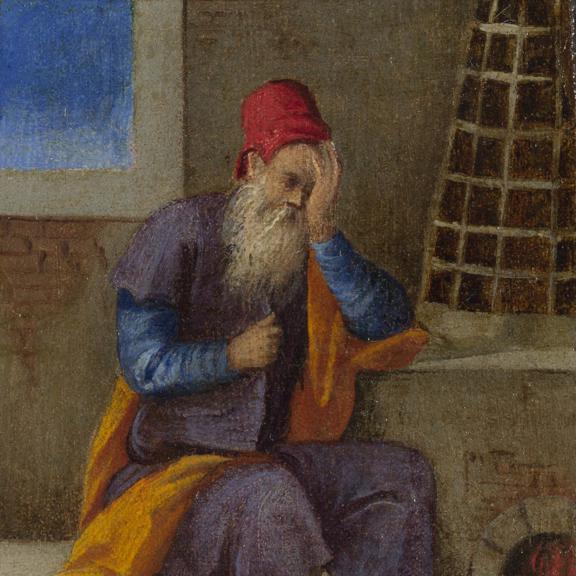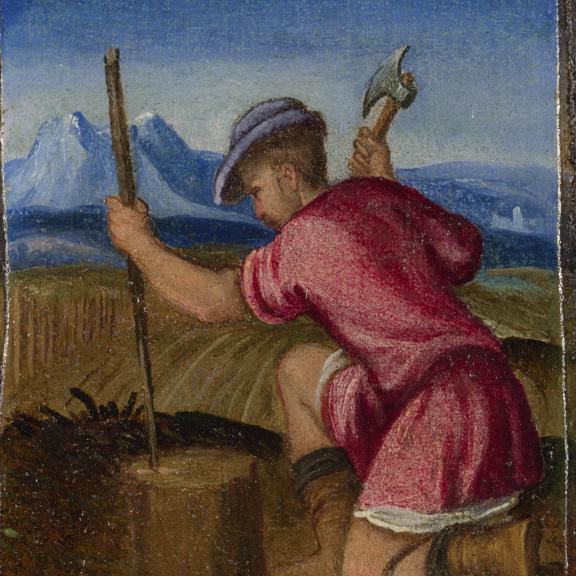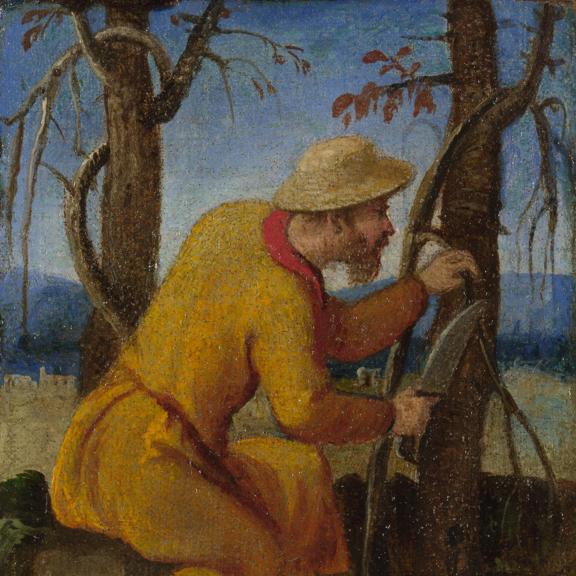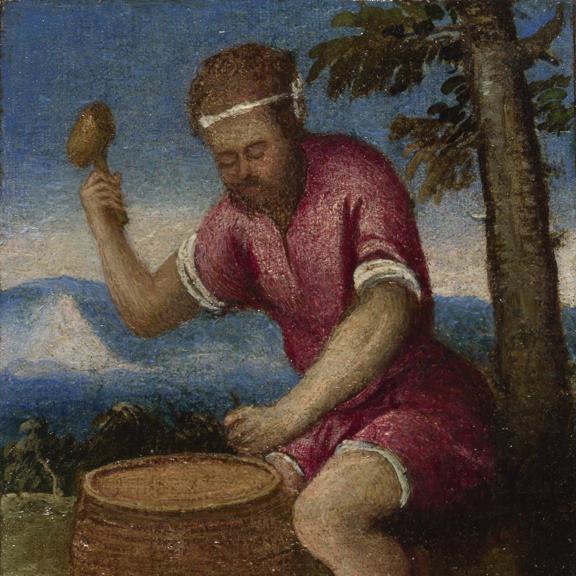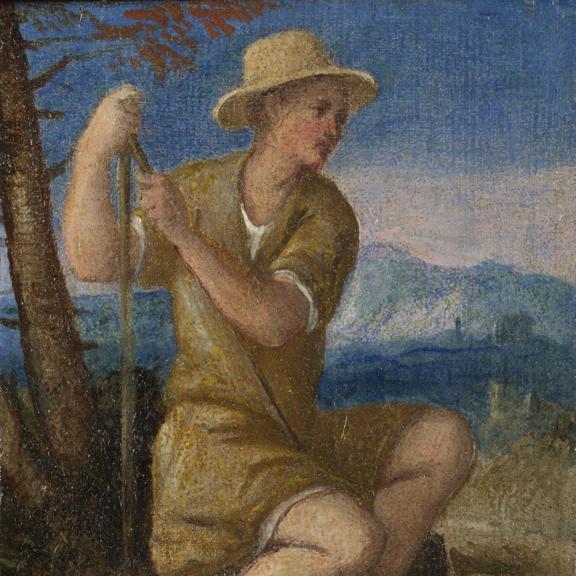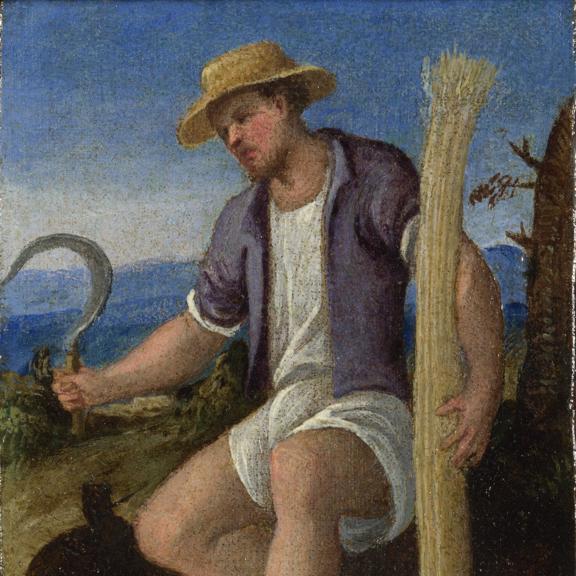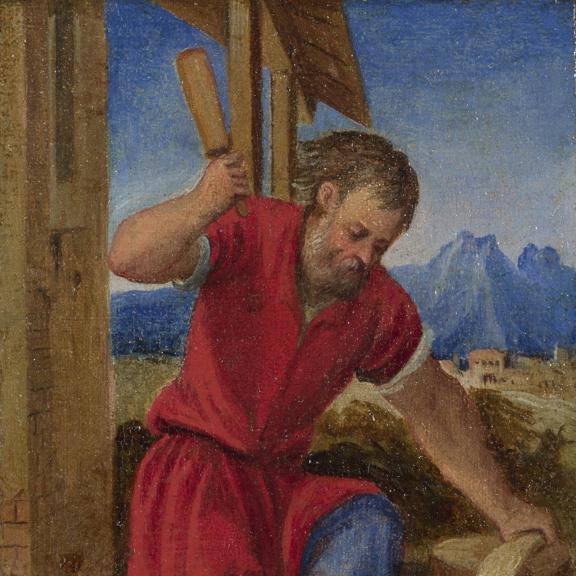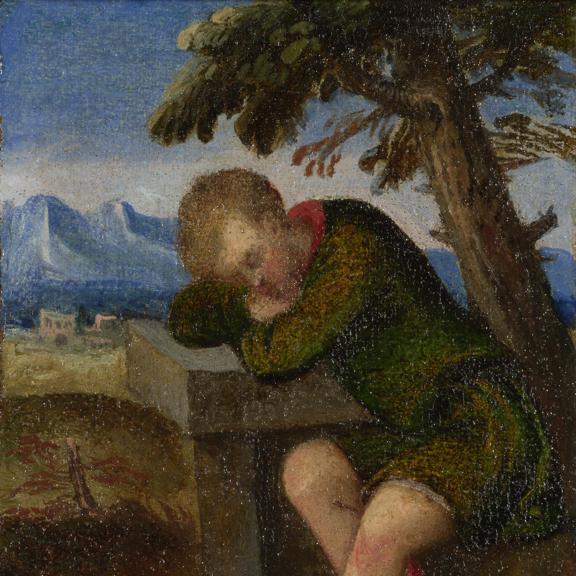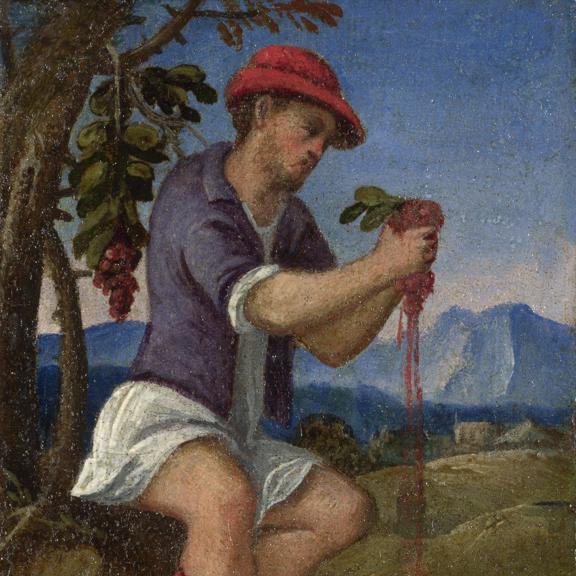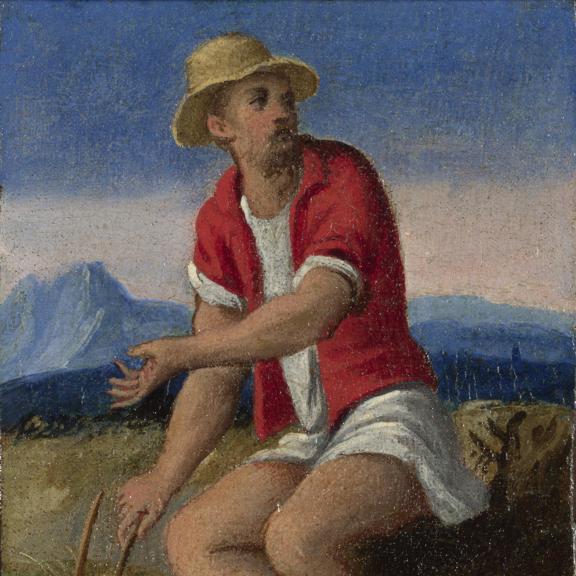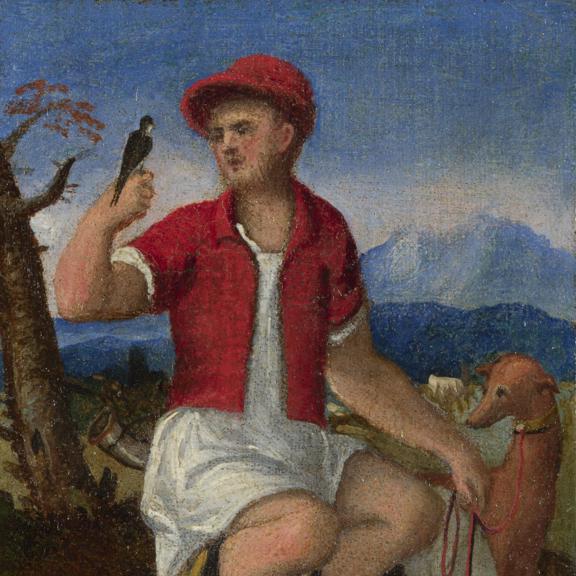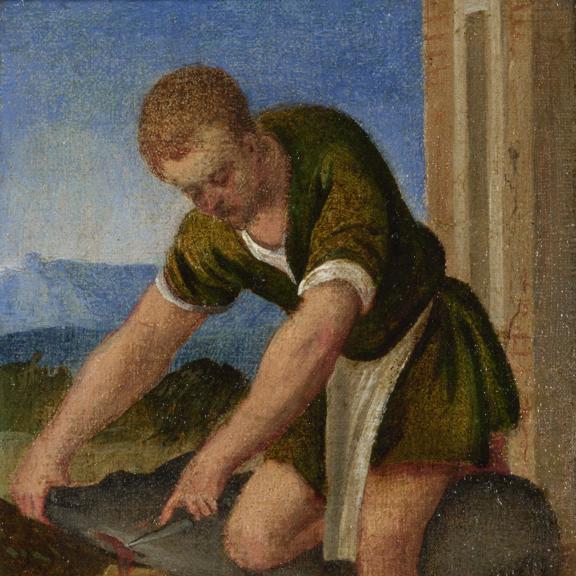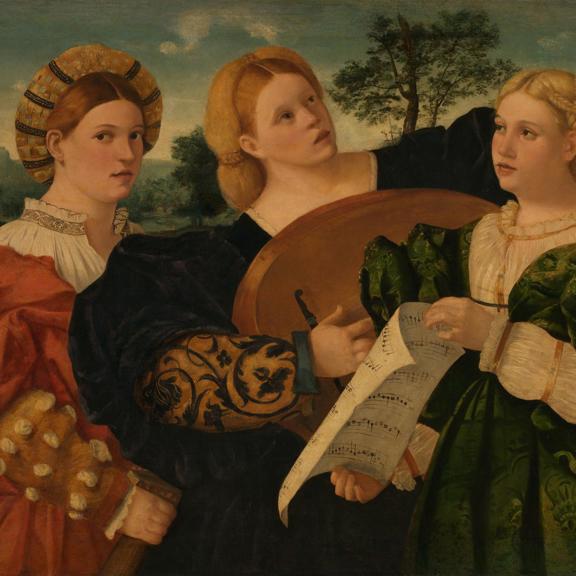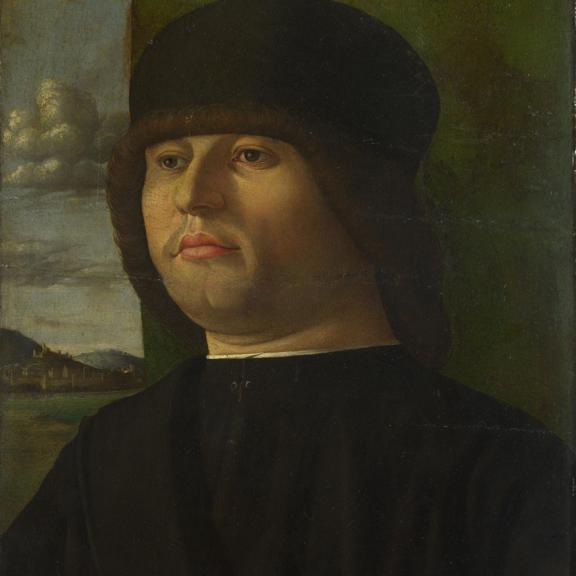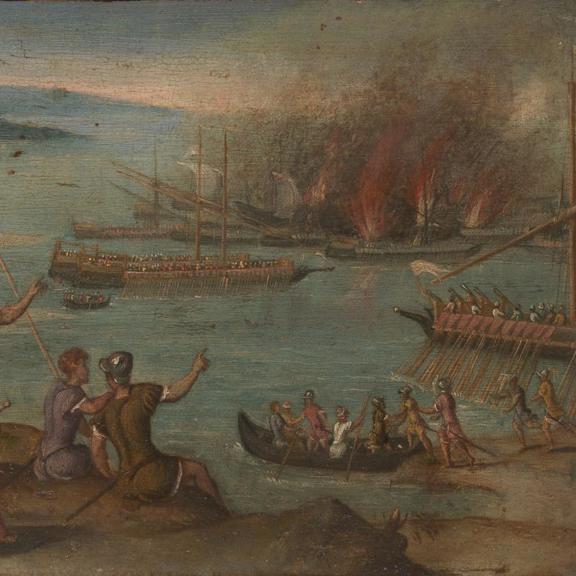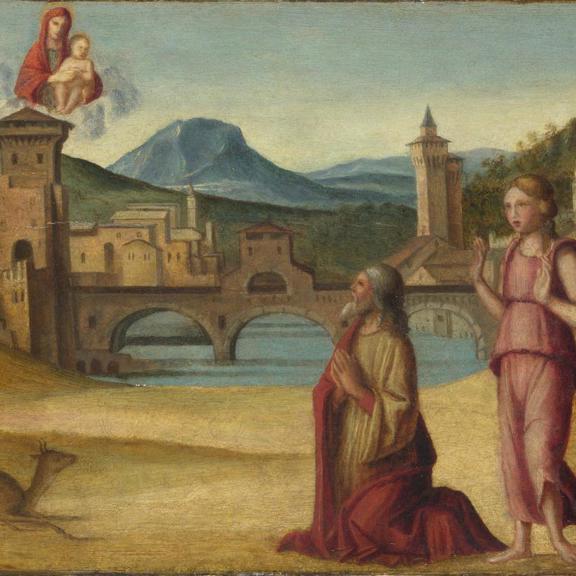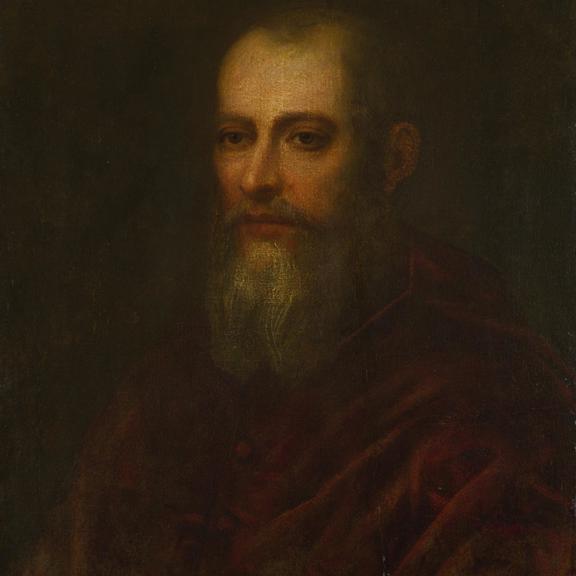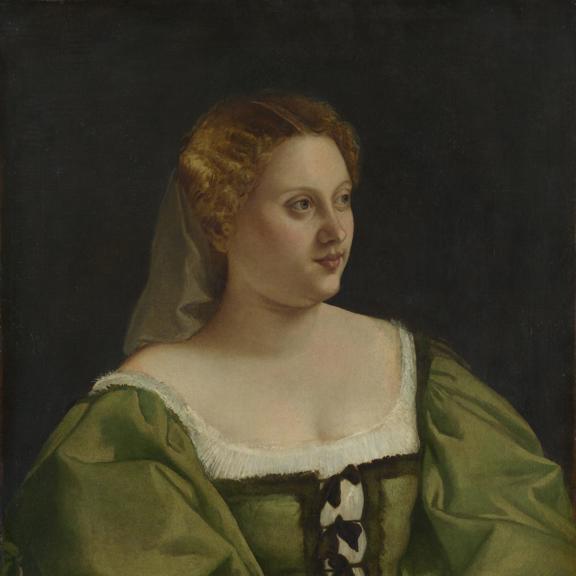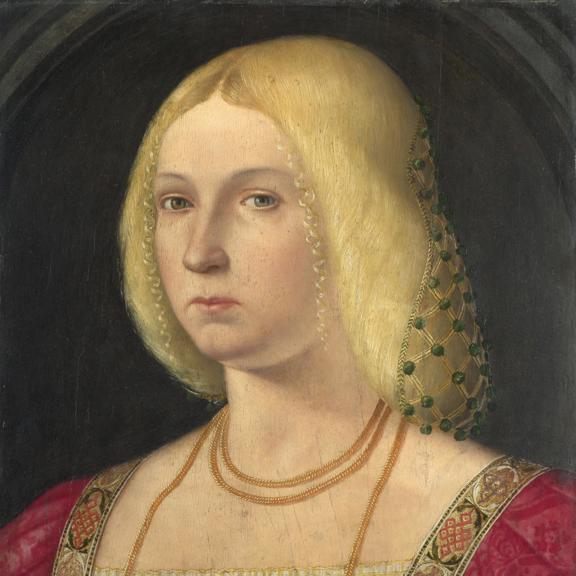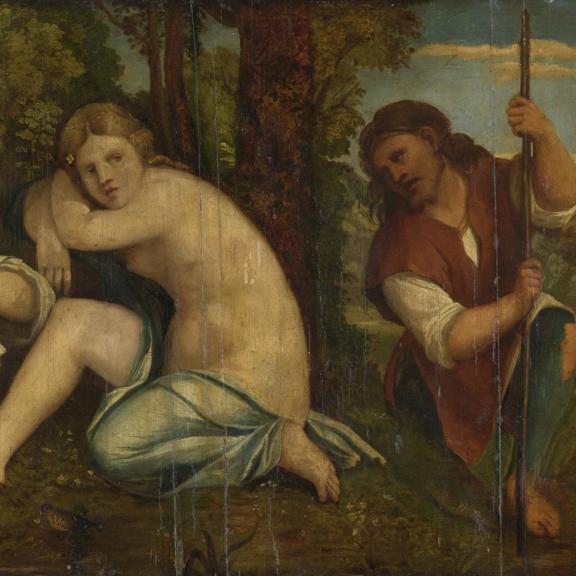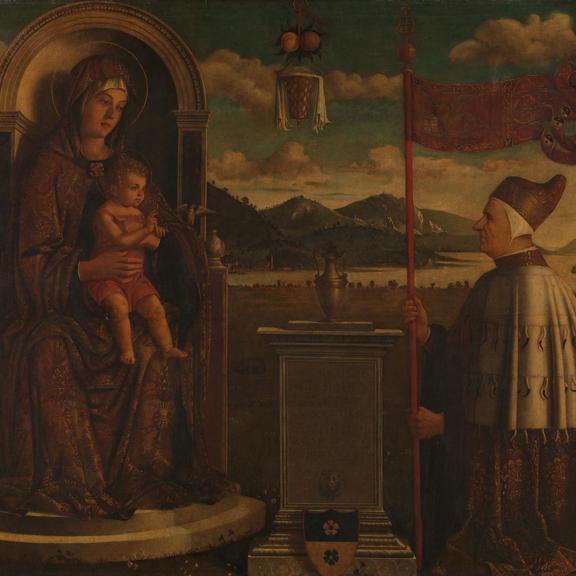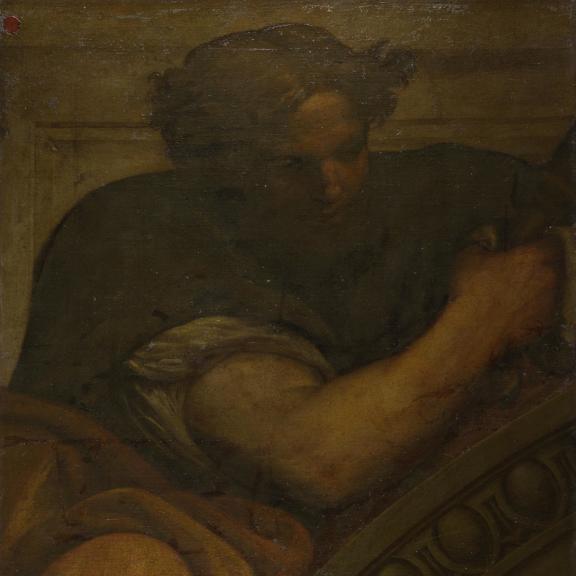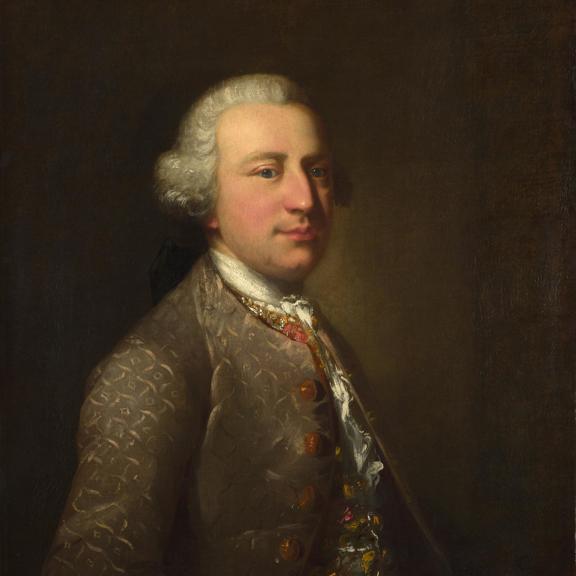Italian, Venetian, The Labours of the Months: March
The Labours of the Months
These 12 small pictures may have been made to decorate the recessed panels of a pair of doors, and seem to have been planned in pairs with the figures facing each other. They show the ‘labours of the months’ – the rural activities that take place each month throughout the year.
They are now framed in two groups of six, arranged in an order which reflects that in other, similar cycles and seems to make sense in relation to the seasons depicted, although we cannot be certain this is the original order.
January: A warmly dressed old man sits by a stove.
February: Trimming stakes with a hatchet.
March: Pruning the vines.
April: A cooper making a barrel.
May: A young man holds two rods.
June: A labourer holds a sheaf of corn he has cut with his scythe.
July: A labourer threshes grain with a flail.
August: Exhausted from fruit picking, a labourer sleeps beneath a tree.
September: The vines are harvested and the grapes pressed.
October: The field is ploughed.
November: A hunter with his hawk and hounds.
December: Slaughtering a pig.
These 12 small pictures were painted on canvas and then each glued to a wooden panel. It is possible that they were made to decorate the recessed panels of a pair of doors. The paintings seem to have been planned in pairs with the figures facing each other and are currently displayed in two frames in groups of six. They show the ‘labours of the months’ – the rural activities that take place each month throughout the year.
Each of the small scenes is painted in bright clear colours, costly ultramarine blue for the sky, strong vermilion and red lake for the clothing, with rich greens and yellows in the landscape. The restricted and repeated use of colour gives the group of little pictures a charming, decorative simplicity. All but one of the scenes show a man working outdoors on what appears to be the estate of a large villa, seen in several of the paintings, at the foot of the distant blue mountains.
The pictures are now framed in the order of the presumed months in which the activities shown take place in Italy, although we cannot be certain this is original order. The figures with bare feet probably belong to the warmer months. The cycle would have started with January, even though the Venetian year began on 1 March.
The so-called labours of the months (they are never all labours) became popular as a subject for art during the twelfth century in carvings around the doorways of Italian churches. The exhausted fruit gatherer who represents August in this cycle is also found in the carvings on the basilica of San Marco in Venice. Paintings of the months on canvas or panel were much less common than those of the four seasons.
When bought by the National Gallery in 1888, these paintings were believed to be by Bonifazio de' Pitati, a painter from Verona who settled in Venice and took over Palma Vecchio’s workshop. However they are more likely to have been painted by an artist working in the style of Lodovico Pozzoserrato (Lodewyk Toeput) from Antwerp who, after a stay in Venice, settled in Treviso in the 1580s. The figures are similar to those in his canvases of the 1580s, such as The Miraculous Draught of Fishes now in the Hermitage, St Petersburg.
The pictures are currently arranged in this order:
January: A warmly dressed old man sits by a stove.
February: Trimming stakes with a hatchet.
March: Pruning the vines.
April: A cooper making a barrel
May: A young man holds two rods.
June: A labourer holds a sheaf of corn he has cut with his scythe.
July: A labourer threshes grain with a flail.
August: Exhausted from fruit picking, a labourer sleeps beneath a tree.
September: The vines are harvested and the grapes pressed.
October: The field is ploughed.
November: A hunter with his hawk and hounds.
December: Slaughtering a pig.

